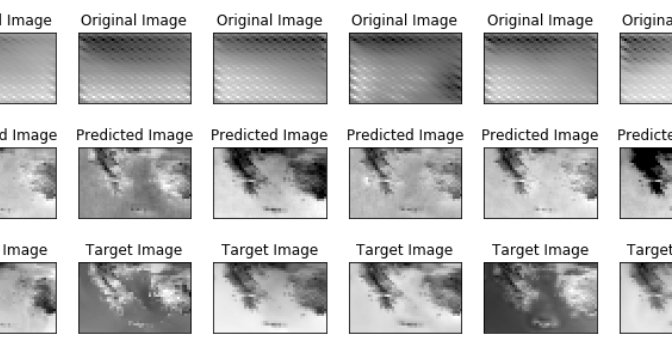Karozis S., Klampanos I.
Meteorological data are produced in various spatial and time sizes, depending on the application they will be used. The data are the result of Numerical Weather Prediction (NWP) simulations, e.g. the solution of mass & energy balance equations, concerning the fluids of the atmosphere. The uncertainty of the solution (time-series of domain) becomes higher as the prediction goes further to the future, thus, limiting the applicability of hour per hour resolution of such models, to 2 to 5 days ahead. In case of further in time predictions, statistical measurements (mean, man, min, etc) or indicators (tropical days or nights etc) of the whole day(s), week(s) or month(s), are taken into account.
In the current study, a deep learning approach, based on convolutional autoencoders, is explored in order to effectively correct the error of the simulation result in space and time domain, hence performing a result similar to statistical downscaling methods. The result can be used in NWP simulations as initial and boundary condition, thus, enabling more accurate longer prediction. The current study is an attempt to improve the global seasonal forecast (3-6 month ahead) data accuracy, for the Greece area, with a more reliable reanalysis dataset, that incorporates observations, satellite imaging etc and has better spatial resolution. Specifically the Meteo France Seasonal and the NCEP FNL data are utilized and they are publicly available from Copernicus platform and the National Oceanic and Atmospheric Administration (NOAA) accordingly. Moreover, external information is used as evidence transfer, concerning the time conditions (month, day, season) and the simulation characteristics (initialization of simulation). It is found that the convolutional autoencoders help improve the resolution of the seasonal data and successfully correct the error of NWP data for 6 month ahead forecasting. Interestingly, the season evidence yields the best results which indicates a seasonal (winter, spring, summer, autumn) dependence of the performance.

